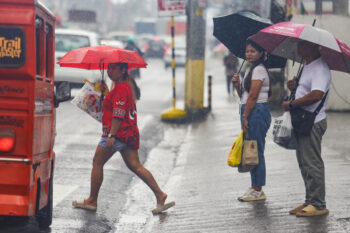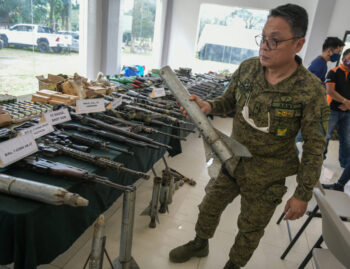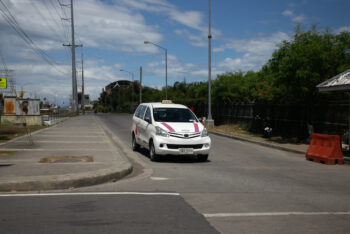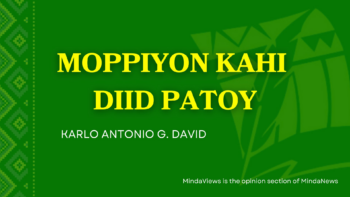
MALAYBALAY CITY (MindaNews / 27 July)—In his last State of the Nation Address (July 22, 1985), President Ferdinand E. Marcos Sr., who would be deposed via the EDSA People Power Revolt seven months later, admitted that the Philippines was facing an economic crisis.
Marcos attributed the crisis to “our vulnerability to the unexpected drop in access to international credit and high interest rates, and our difficulty in managing our balance of payments position with limited resources.”
“These two factors were already constricting the growth of the economy when tragedy struck former Senator Benigno Aquino Jr. in August 1983. The tragic event, however, triggered the financial crisis, making a tough situation suddenly critical. A debt moratorium had to be enforced on October 17, 1983,” he added, referring to the assassination of his political arch-rival upon returning from exile in the United States.
Aquino’s murder, which was blamed on the dictator, triggered widespread protests across the nation, and diminished the Marcos government’s standing in the international community.
Marcos flaunted his Economic Recovery Program as having enabled the country to overcome the crisis. Yet, the measures that were undertaken to address the crisis – greater control on public spending, a structural adjustment program that included liberalization of import restrictions, among others – were “often criticized as too severe and painful, but these were necessary to put the economy back on its feet.”
How did the administration of the elder Marcos intend to carry out his program to revitalize the economy?
Marcos cited in the same SONA that the most critical component under the program was the standby facility from the International Monetary Fund amounting to SDR615 million or $610 million approved by the IMF board on December 14, 1984. However, the first tranche of $80 million released in the same month “was used to pay the bridge financing loan extended by the governments of the United States, Japan, and Korea subsequent drawdowns will be contingent upon the achievement of certain quarterly performance criteria outlined in the economic adjustment program.”
(According to the IMF, the SDR or Special Drawing Rights is a supplementary international reserve asset it created in 1969, when currencies were tied to the price of gold and the US dollar was the leading international reserve asset. It was equivalent to a fractional amount of gold that was equivalent to one US dollar. When fixed exchange rates ended in 1973, it was redefined as “equivalent to the value of a basket of world currencies. The SDR itself is not a currency but an asset that holders can exchange for currency when needed. The SDR serves as the unit of account of the IMF and other international organizations.”)
Marcos had often relied on foreign loans to finance the Philippines’ capital requirements and to meet payment obligations for existing debts, in what critics of his economic policies described as a “borrowing orgy” that led to a debt vortex.
By the time he was ousted in February 1986, the country’s foreign debt stood at $26 billion, which was equivalent to 50 percent of the Gross Domestic Product, and a 4,300-percent rise from the $600-million debt that he inherited when he first became president in 1965.
“The country remained in the vortex until 2003 when foreign debts grew further to $61 billion or 70% of GDP. Throughout this era, debt service accounted for well over 40% of the national budget. This explains why we were unable to invest in infrastructure, social development programs, and economic pump-priming activities,” Andrew Marasigan, an economist, wrote in his column “Numbers Don’t Lie” at BusinessWorld Online (Nov. 6, 2022).
Here comes the son
As of March 2023, three months before President Ferdinand Marcos Jr. would complete his first year in office, Philippine external debt reached an all-time high of $118.8 billion compared with $111.3 billion in the previous quarter. The figures are based on data provided by the Bangko Sentral ng Pilipinas.
Moreover, even before finishing his first year in office, Marcos Jr. had surpassed his three predecessors (Gloria Macapagal-Arroyo, the late Benigno S. Aquino III., Rodrigo Duterte) in terms of the average monthly increase in outstanding debt. From July 2022 until May 2023, the average monthly increase was P118.6 billion. The figure was P95.1 billion under Duterte, P19.0 billion under Aquino III, and P21.2 billion under Arroyo, according to the research institution Ibon.
Marcos Jr. needs to borrow P2.207 trillion more to cover the projected deficit in the 2023 national budget of P5.26 trillion. P1.65 trillion will come from domestic sources and P553.5 billion from external sources. The government is always forced to resort to borrowings from both domestic and foreign creditors, as it spends more than it earns.
Yet, of the total national budget, debt servicing will eat up roughly P1.6 trillion—P582.32 billion for interest payments and P1.01 trillion for principal amortization. The inclusion of debt servicing items in the national budget is mandated by Presidential Decree No. 1177, which is more popularly known as the Automatic Appropriations Law issued by Marcos Sr.
The P1.6 trillion for debt servicing is equivalent to 72 percent of the amount to be borrowed to cover this year’s projected budget deficit, and 30 percent of the budget itself.
Note further that the amount for interest payments alone is almost twice the allocation for health (P296.3 billion), 295 percent more than that for social services (P197 billion), and almost five times bigger than that for agriculture (P184.1 billion). Meanwhile, the amount for principal amortization is bigger than the budget for education (P852.8 billion).
Are we being drawn into another debt vortex?
(MindaViews is the opinion section of MindaNews. H. Marcos C. Mordeno can be reached at hmcmordeno@gmail.com.)







